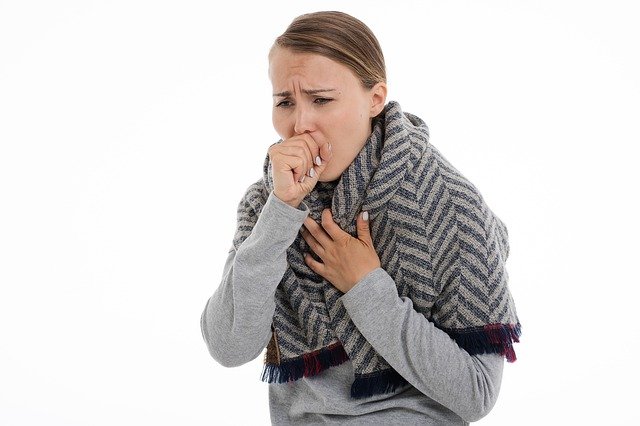With the arrival of Covid-19 we could realize the importance of the air we breathe. Sometimes, we could take this fact for granted, but the truth is that we cannot live without it, and that is more than proven. Many people have died due to lack of oxygen and, in many countries where the health system is deficient and precarious, even anarchy took over the places where oxygen cylinders were sold and refilled, in view of the scarcity of oxygen, due to the number of people infected by the virus. However, this is not the first or the only disease to affect the airways. There are many others that, if not treated in the right way, could also lead to death. Some of them are pneumonia, bronchitis and tuberculous is. With regard to the latter, it was considered that it had been eradicated, that is, that there were no longer people who suffered from it. However, reality hit hard when he appeared on the scene again.

Tuberculosis is a disease that has killed hundreds of people around the world. This, because it is not treated in time, given that, at first, it can be confused with the common flu or with another disease considered harmless. Now, what is tuberculosis? What are its symptoms? How is it transmitted? What are its complications? And, more importantly, what kind of treatment should be administered to get out of risk and regain health? If you are interested in this topic and want to know the answers to these and other questions, through this simple post, but explanatory, I will be informing you about everything you need to know in relation to tuberculous is and how it acts in our body.
Instructions for making an early diagnosis of tuberculosis
Tuberculosis is an infectious disease that should not be taken lightly and that mainly affects the respiratory tract. The bacteria that spread it are transmitted from one person to another through tiny droplets, which travel through the air, when coughing, sneezing and even talking. Although it is true that the body could host the bacteria that cause tuberculosis, in general, the immune system is responsible for preventing the disease from developing and ending up infected. For this reason, doctors make a distinction between: Latent tuberculosis: in this case, tuberculosis is present in the body. However, the bacteria is inactive and therefore does not produce symptoms. It is also known as inactive tuberculosis or tuberculosis infection and is not contagious. However, it can also develop into active tuberculosis. Hence the importance of implementing treatment as soon as possible. Active tuberculosis: As the name implies, the TB virus is active and therefore makes you sick and, in most cases, contagious. It should be noted that it can develop and manifest weeks or years after being infected by the bacteria.
What do you need to make an early diagnosis of tuberculosis?
It is necessary that you know some of the symptoms, of active tuberculosis, these are: Prolonged cough, which can last three weeks and even longer. Coughing up blood or phlegm. Chest pain when coughing or simply breathing. Significant and unintentional weight loss. Fatigue. Fever. Loss of appetite. Night sweats. Chills, etc. It should be noted that this disease can also affect other organs or parts of the body, such as the kidneys, spine and even the brain. This happens when TB develops outside the lungs. In such a case, the symptoms go to several depending on the organ they affect. For example, when tuberculosis lodges in the spine, it causes severe back pain. In the case of tuberculosis in the kidneys, it results in the presence of blood in the urine. Although it is true that anyone could suffer from tuberculosis, there are certain risk factors that significantly increase this possibility. For example: Having a weak immune system. When the immune system is healthy, it has the ability to fight the TB bacteria on its own. But there are many things that could weaken it, such as HIV, diabetes, kidney disease, cancer treatments, low body weight, being very young or elderly, etc. Travel or live in certain places, such as Africa, Asia, Eastern Europe, Latin America, etc. The use of intravenous substances or alcohol. Tobacco use. Living with someone infected with tuberculosis. Working in health care areas, among other risk factors.
Tips for Making an Early Diagnosis of TB
As I mentioned earlier, only active tuberculosis is contagious. In case your results have come back positive, you should undergo medical treatment for several weeks. This, in order to heal and stop infecting. In the meantime, it is essential that you follow the following recommendations, to avoid infecting your family and friends: Don’t leave your house. This means you can’t go to school or work. Don’t sleep with another person, at least for the first few weeks of your treatment. Keep the room ventilated, since the germs of this disease can spread, very easily, in closed places, where there is no air circulation. Use a tissue every time you laugh, cough or sneeze. Once it’s dirty, you’ll need to dispose of it in a bag, close it tightly, and then get rid of it. When you are in the presence of other people, wear a mask. At least, during the first weeks of treatment, since this is when there is a greater risk of transmission. Eat and drink with personalized and properly identified plates, cutlery and glasses. If you take these recommendations into account, you will be sure that those who live under your same roof will remain healthy while your recovery process lasts. This is the only way for the disease not to spread and for the damage to be worse.
